EHang's driverless megadrone carries passengers around China at 80mph in its first ever test flights
- The company says it has been testing the EHang 184 megadrone with 'thousands of test flights'
- The rider punches in a destination on a touch screen and then the drone flies there automatically
- Quadcopter has been tested in various weather conditions including Category 7 typhoon gale-force winds
- Dubbed EHang 184, the drone is described as the world's first 'Autonomous Aerial Vehicle'
- It is still not known when the company will make the megadrone available for people to buy
- Company claims it is going to demonstrate the service at Dubai's World Government Summit this month
Chinese drone maker EHang has released incredible footage of its 80mph (130kmh) driverless megadrone flying passengers around China for the first time.
The company says it has been testing the EHang 184 megadrone with 'thousands of test flights' with human passengers over the last four years and this new footage is the first evidence of the craft in action.
The rider punches in a destination on a touch screen in front of the passenger seat, then the drone flies there automatically.
The quadcopter has also been tested in various weather conditions including heat, fog, during the night and during Category 7 typhoon gale-force winds.
Ehang says it has conducted flight tests in both the single and double-seater version of its passenger drone.
The company claims it is going to demonstrate the service at Dubai's World Government Summit this month, although it has yet to be officially confirmed.
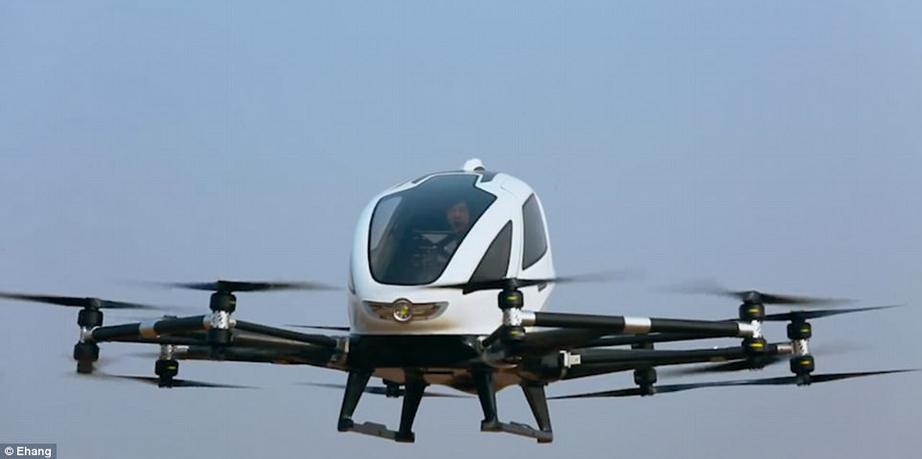
Chinese drone maker EHang has released incredible footage of its 80mph driverless megadrone whizzing passengers around China for the first time (pictured)
It also completed a 984-foot (300-metre) vertical climb and could carry weights of more than 500 pounds (230kg), writes The Verge.
The quadcopter can fly more than 9.3 miles (15km) and has a high-speed cruising speed of 80.7mph (130kmh).
The company claims to have tested the drone with 40 different passengers, including Wang Dong, the deputy mayor of Guangzhou, China, where the tests have been carried out.
Hu said: 'Performing manned test flights enables us to demonstrate the safety and stability of our vehicles.
'What we're doing isn't an extreme sport, so the safety of each passenger always comes first.'
The EHang 184, megadrone is described as the world's first 'Autonomous Aerial Vehicle' for transporting people although it is still not known when the company will make the drone available.
The electric-powered vehicle can carry a passenger for ten miles - or the equivalent of 23 minutes of flight.
The company has also developed and tested a two-seater with a payload of up to 617 pounds (280 kilograms).
'What we're doing isn't an extreme sport, so the safety of each passenger always comes first,' said Ehang founder and CEO Huazhi Hu.
'Now that we've successfully tested the Ehang 184, I'm really excited to see what the future holds for us in terms of air mobility', he said.

The company says it has been testing the EHang 184 megadrone with 'thousands of test flights' with human passengers over the last four years and this new footage is the first evidence of the craft in action

The quadcopter has also been tested in various weather conditions including heat, fog, during the night and during Category 7 typhoon gale-force winds, the company says
The vehicle takes off, flies and lands autonomously and all the person in the cockpit does is input the ride.
EHang also has a command centre that employs people to make sure everything is safe — sort of like an air traffic controller at an airport.
The command centre monitors every 184 in the air 24/7 and the company plans integrate with existing air traffic controller operations.
The command centre, for example, makes sure that a 184 doesn't take off in extreme weather conditions.
In the event something does go wrong, a pilot can take control remotely.

The company claims it is going to demonstrate the service at Dubai's World Government Summit this month, although it has yet to be officially confirmed. The quadcopter can fly more than 9.3 miles (15km) and has a high-speed cruising speed of 80.7mph (130km/h)
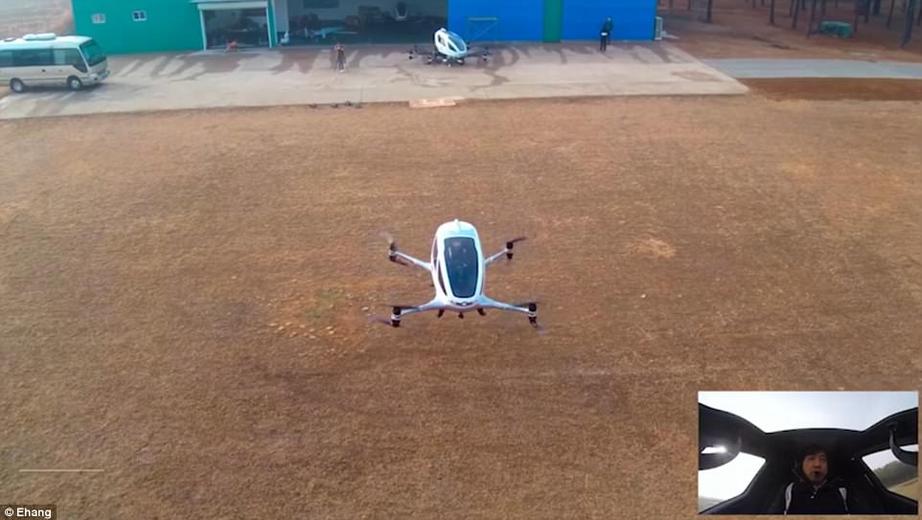
Dubbed EHang 184, the drone is described as the world's first 'Autonomous Aerial Vehicle' for transporting people although it is still not known when the company will make the drone available
WHAT IS THE EHANG 184 AND HOW DOES IT WORK?
Unveiled at CES in Las Vegas in 2016, the all-electric driverless EHang 184 megadrone has four arms with a total of eight propellers at the end.
The company says it has been testing the EHang 184 megadrone with 'thousands of test flights' with human passengers over the last four years.
The drone is described as the world's first 'Autonomous Aerial Vehicle' for transporting people although it is still not known when the company will make the drone available.
The quadcopter can fly more than 9.3 miles (15km) and has a high-speed cruising speed of 80.7mph (130km/h).
It is capable of automatically carrying a passenger through the air, simply by entering a destination into its accompanying smartphone app.
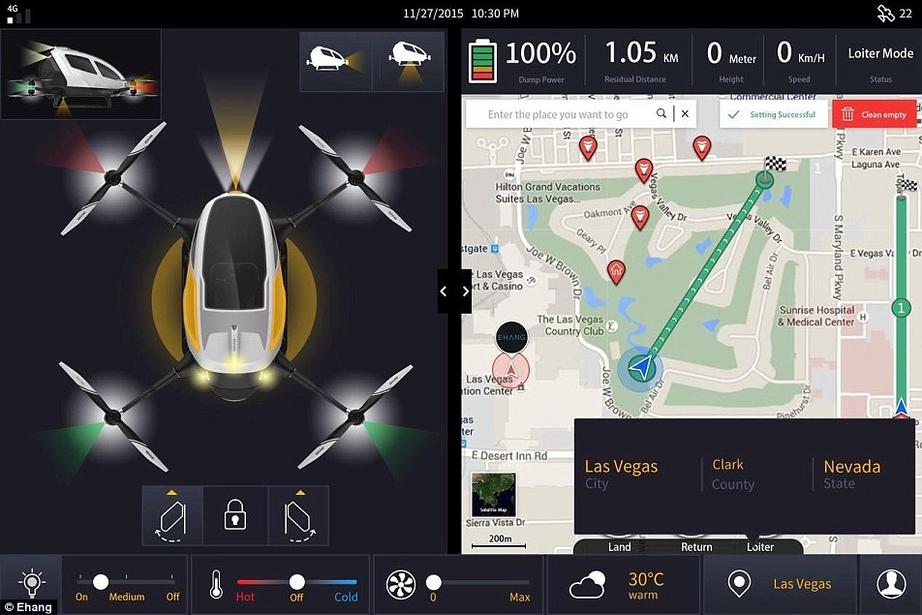
The 184 uses multiple independent flight control systems to automatically navigate passengers from point A to point B
The 184 uses multiple independent flight control systems to automatically navigate passengers from point A to point B.
These systems combine real-time data collected from sensors throughout the flight and automatically plots the fastest and safest route to carry passengers to their destinations.
EHang will also have a command centre that employs people to make sure everything is safe — sort of like an air traffic controller at an airport.
The command centre will monitor every 184 in the air 24/7 and the company plans integrate with existing air traffic controller operations.
The command centre would, for example, make sure that a 184 doesn't take off in extreme weather conditions.
In the event something does go wrong, a pilot can take control remotely.
The company has also developed and tested a two-seater with a payload of up to 617 pounds (280 kilograms).
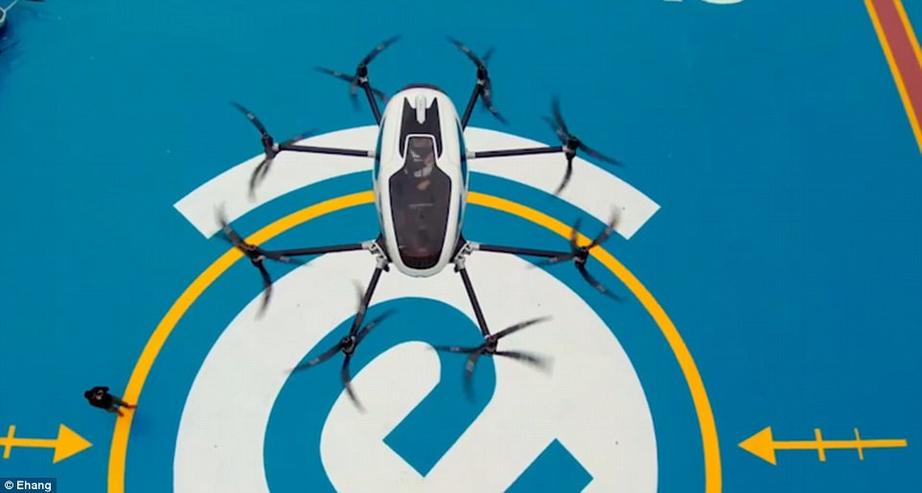
Unveiled at CES in Las Veg as in 2016, the all-electric vehicle has four arms with a total of eight propellers at the end. These systems combine real-time data collected from sensors throughout the flight and automatically plot the fastest and safest route to carry passengers to their destinations
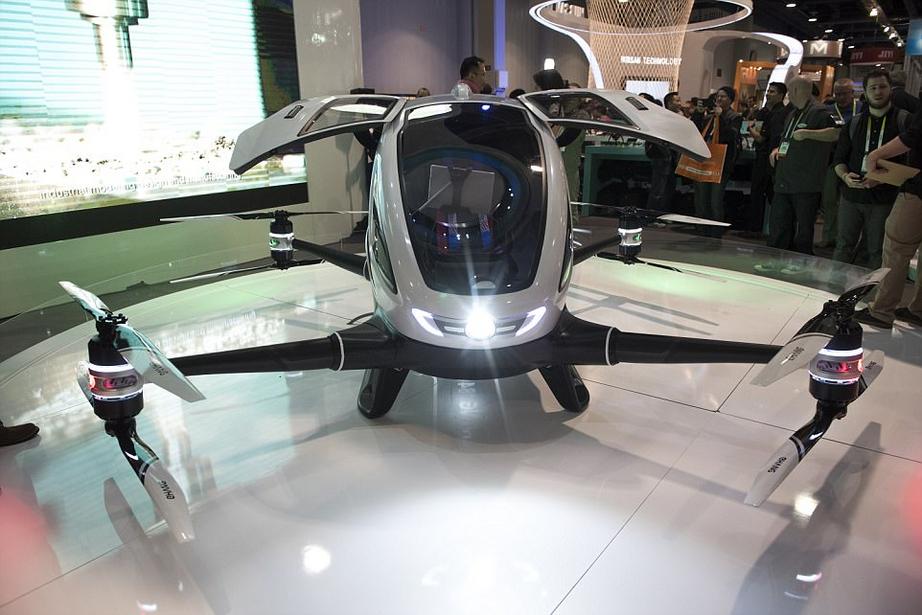
'I think in all of us there is that little kid in all of us that says I want to fly,' said founder George Yan. 'I don't want to get a pilot license after five or 10 hours of flying, I want to do it right away. We're making that dream happen'
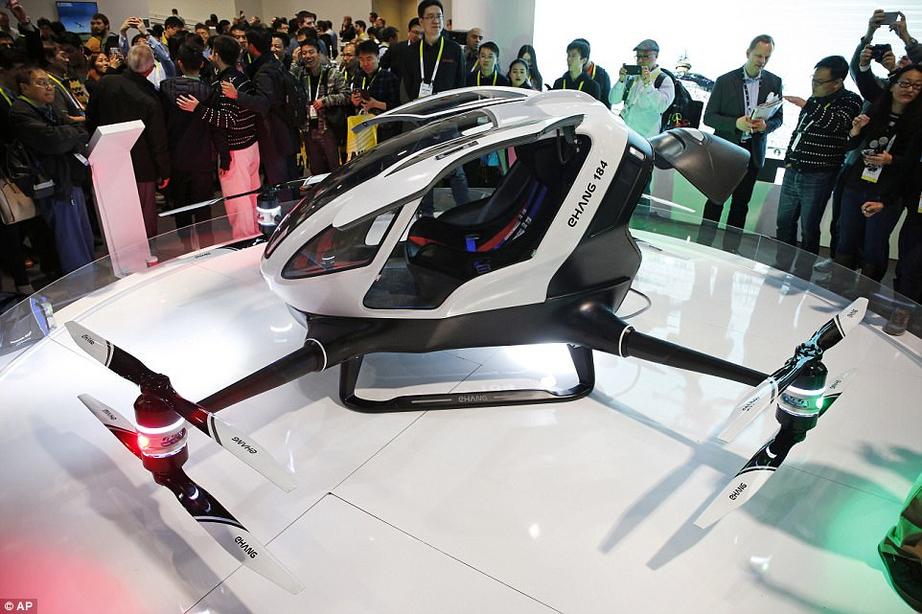
EHang claims to be building the world's first 'Autonomous Aerial Vehicle' for transporting people. 'You know how it feels to sit in a Ferrari? This is 10 times better,' said George Yan, co-founder of Ehang in an interview with DailyMail.com. Pictured is a concept image
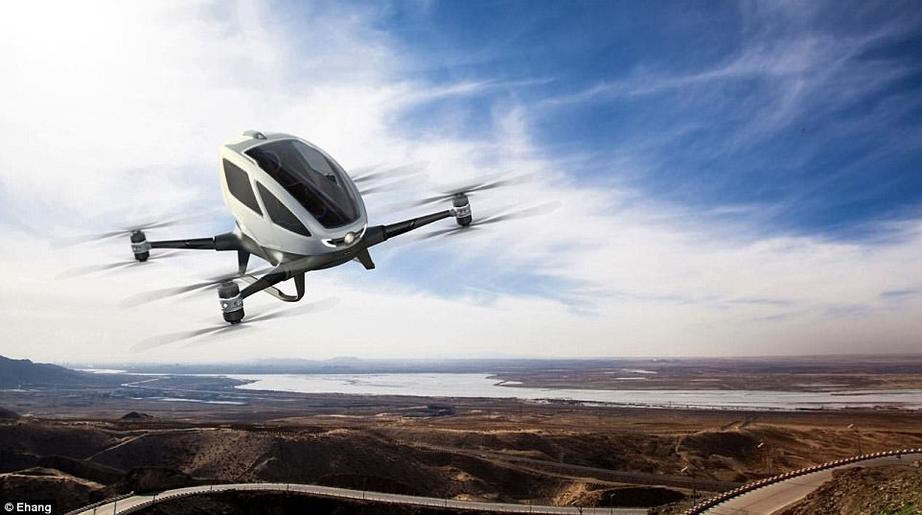
EHang is building the world's first 'Autonomous Aerial Vehicle' for transporting people. The company has permission to test the Ehang 184 in Nevada
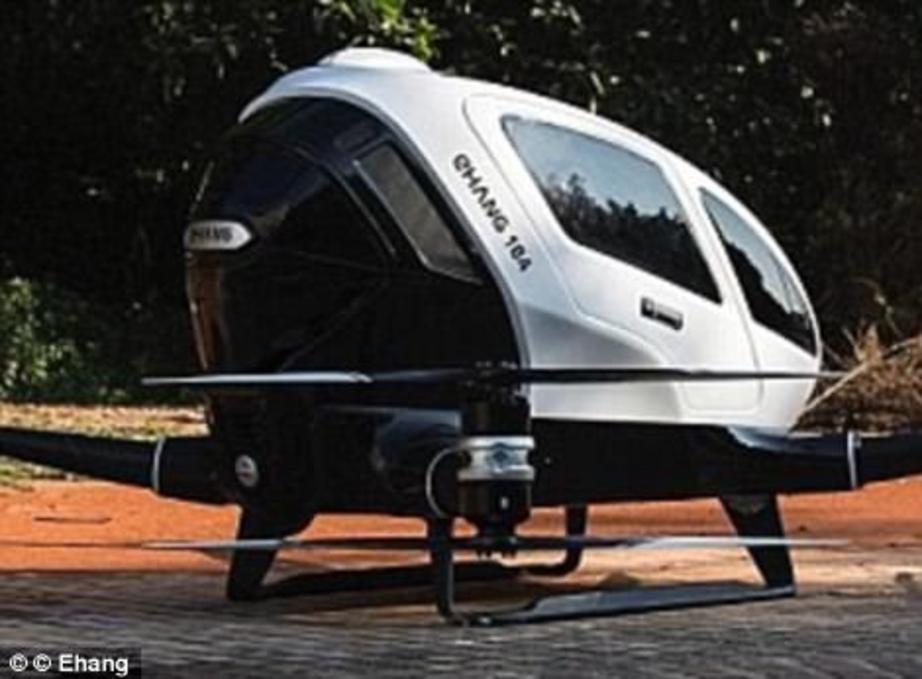
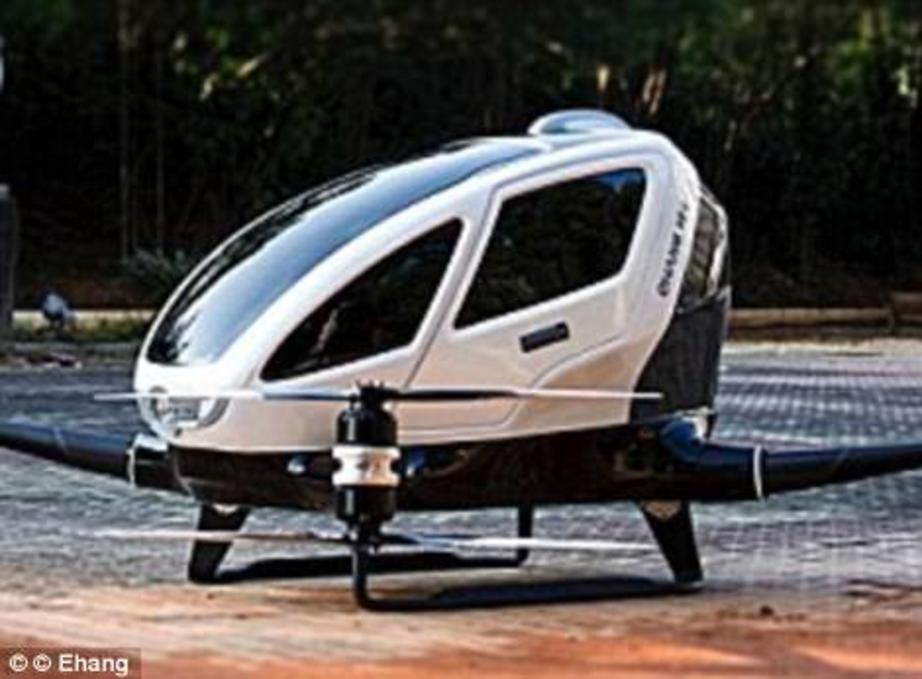
The rider punches in a destination on a touch screen in front of the passenger seat, then the drone flies there automatically. It takes off and lands vertically, subsequently eliminating the need for runways
The company has permission to test the Ehang 184 in Nevada.
'You know how it feels to sit in a Ferrari? This is 10 times better,' George Yan, co-founder of Ehang said in an interview with DailyMail.com in 2016.
Unveiled at CES in Las Veg as in 2016, the all-electric vehicle has four arms with a total of eight propellers at the end.
These systems combine real-time data collected from sensors throughout the flight and automatically plot the fastest and safest route to carry passengers to their destinations.
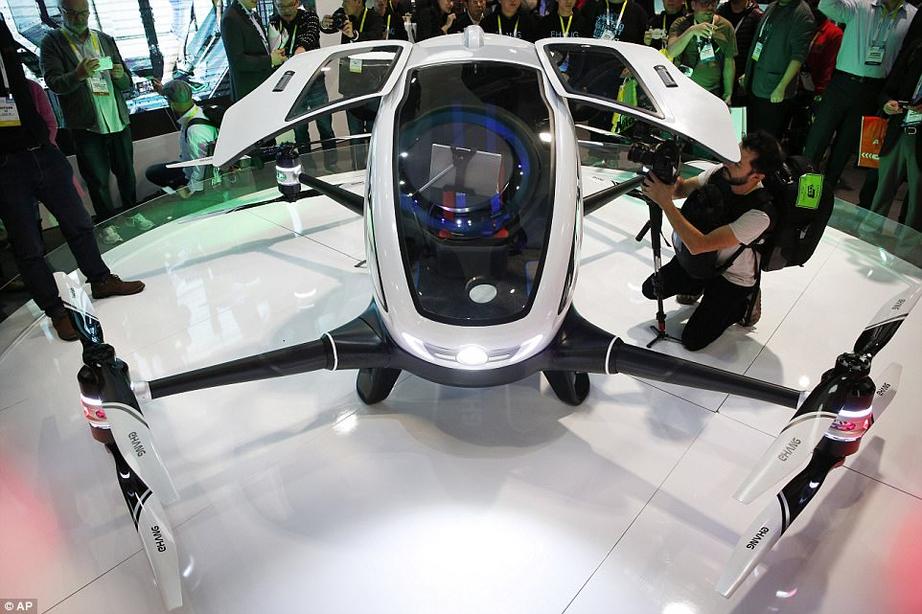
EHang also has a command centre that employs people to make sure everything is safe — sort of like an air traffic controller at an airport
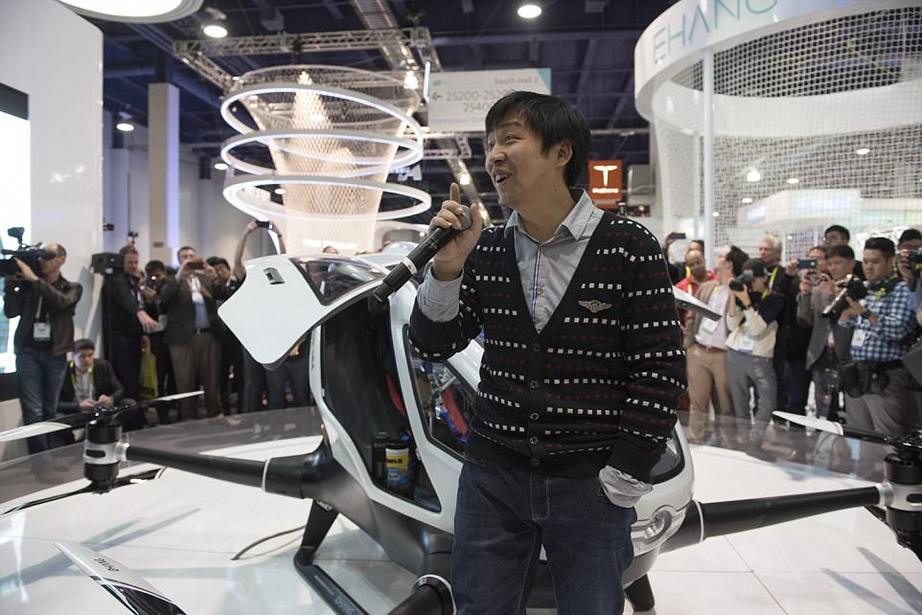
President/CEO Hu Huazhi of EHang unveils the 184 Autonomous Aerial Vehicle at CES Las Vegas from the Las Vegas Convention Centre in 2015
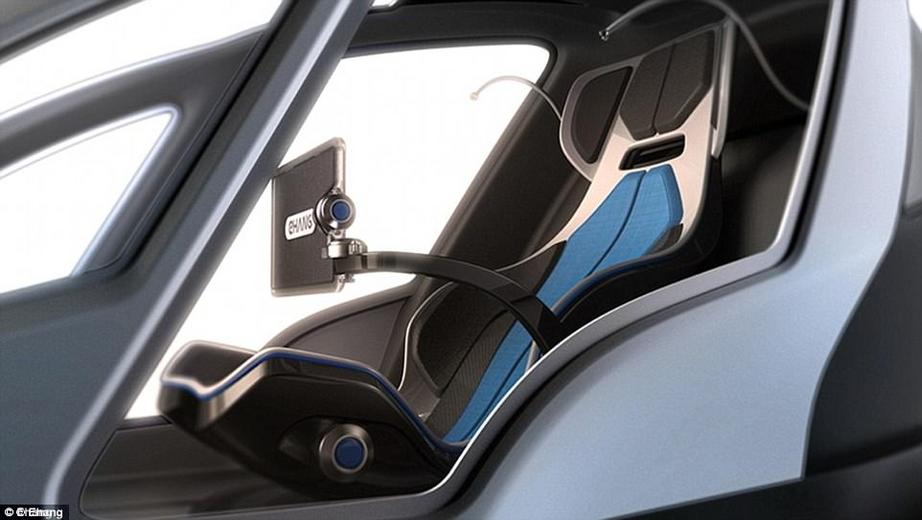
EHang will also have a command centre that employs people to make sure everything is safe — sort of like an air traffic controller at an airport. The command centre will monitor every 184 in the air 24/7 and the company plans integrate with existing air traffic controller operations


The EHang is capable of automatically carrying a passenger through the air, simply by entering a destination into its accompanying smartphone app. 'I think in all of us there is that little kid in all of us that says I want to fly,' said Yan
It takes off and lands vertically, subsequently eliminating the need for runways.
'I think in all of us there is that little kid in all of us that says I want to fly,' said Yan.
'I don't want to get a pilot license after five or 10 hours of flying, I want to do it right away. We're making that dream happen.'
'Everything is calculated in the backend to pick the most optimal route for you, so there is no collision with the other drones flying,' said Yan.

'Everything is calculated in the backend to pick the most optimal route for you, so there is no collision with the other drones flying,' said Yan. Pictured is the drone being unveiled in Las Vegas in 2015
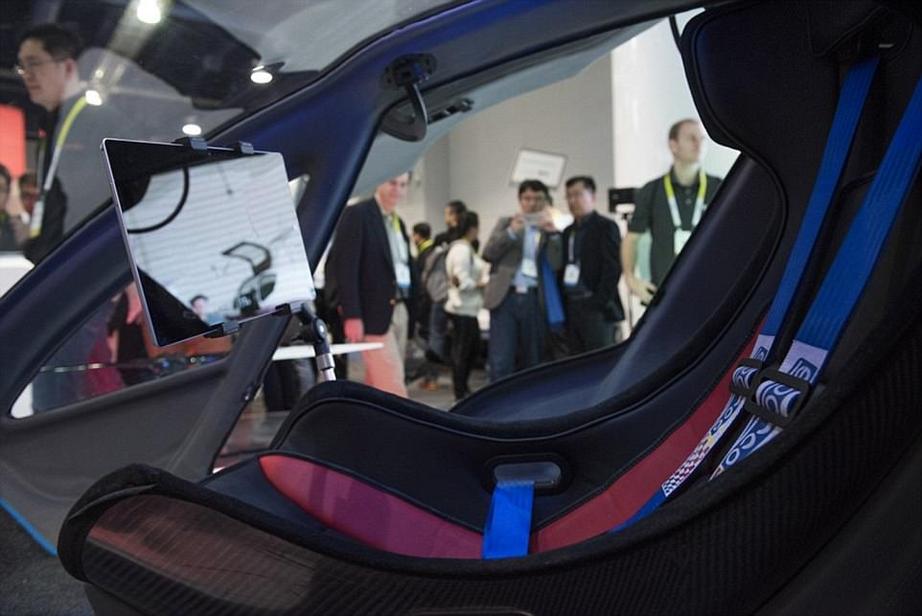
The 184 uses multiple independent flight control systems to automatically navigate passengers from point A to point B
WHAT TYPE OF FLYING TAXIS COULD WE EXPECT TO SEE IN THE FUTURE?
Advances in electric motors, battery technology and autonomous software has triggered an explosion in the field of electric air taxis.
Larry Page, CEO of Google parent company Alphabet , has poured millions into aviation start-ups Zee Aero and Kitty Hawk, which are both striving to create all-electric flying cabs.
Kitty Hawk is believed to be developing a flying car and has already filed more than a dozen different aircraft registrations with the Federal Aviation Administration, or FAA.
Page, who co-founded Google with Sergey Brin back in 1998, has personally invested $100 million (£70 million) into the two companies, which have yet to publicly acknowledge or demonstrate their technology.
Secretive start-up Joby Aviation has come a step closer to making its flying taxi a reality.
The California-based company, which is building an all-electric flying taxi capable of vertical take-off, has received $100 million (£70 million) in funding from a group of investors led by Toyota and Intel.
The money will be used to develop the firm’s 'megadrone' which can reach speeds of 200mph (321kph) powered by lithium nickel cobalt manganese oxide batteries.
The Joby S2 prototype has 16 electric propellers, 12 of which are designed for vertical take-off and landing (VTOL), which means no runway is needed.
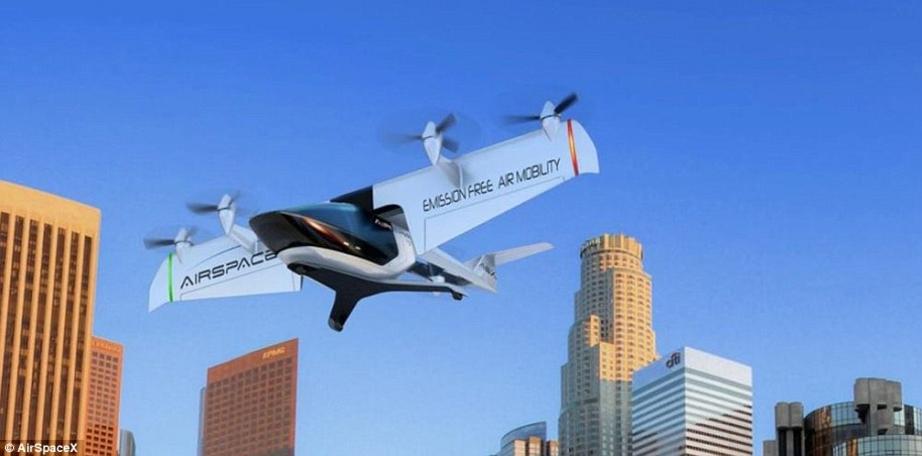
AirSpaceX unveiled its latest prototype, Mobi-One, at the North American International Auto Show in early 2018. Like its closest rivals, the electric aircraft is designed to carry two to four passengers and is capable of vertical take-off and landing
The aircraft takes off vertically, like a helicopter, before folding away 12 of its propellers so it can glide like a plane once it is airborne.
Airbus is also hard at work on a similar idea, with its latest Project Vahana prototype, branded Alpha One, successfully completing its maiden test flight in February 2018.
The self-piloted helicopter reached a height of 16 feet (five metres) before successfully returning to the ground. In total, the test flight lasted 53 seconds.
Airbus previously shared a well-produced concept video, showcasing its vision for Project Vahana.
The footage reveals a sleek self-flying aircraft that seats one passenger under a canopy that retracts in similar way to a motorcycle helmet visor.
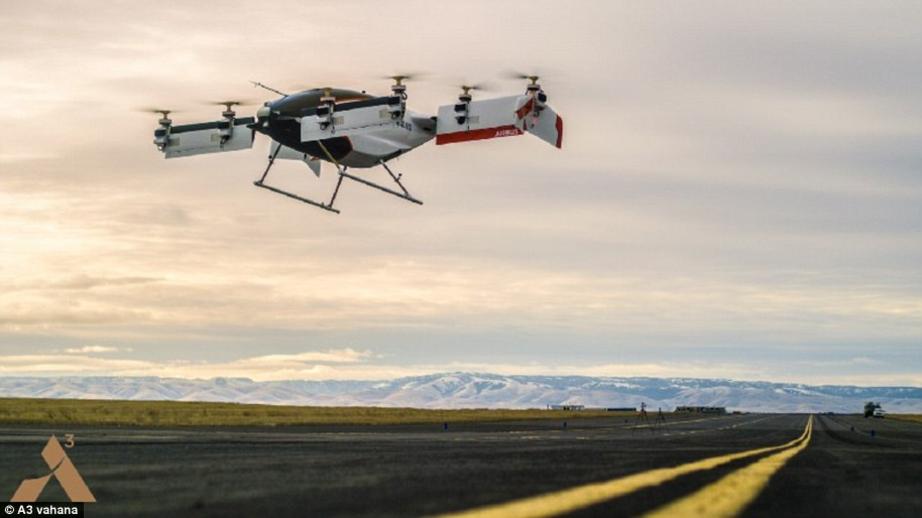
Airbus Project Vahana prototype, branded Alpha One, successfully completed its maiden test flight in February 2018. The self-piloted helicopter reached a height of 16 feet (five metres) before successfully returning to the ground. In total, the test flight lasted 53 seconds
Like Joby Aviation, Project Vahana is designed to be all-electric and take-off and land vertically.
AirSpaceX is another company with ambitions to take commuters to the skies.
The Detroit-based start-up has promised to deploy 2,500 aircrafts in the 50 largest cities in the United States by 2026.
AirSpaceX unveiled its latest prototype, Mobi-One, at the North American International Auto Show in early 2018.
Like its closest rivals, the electric aircraft is designed to carry two to four passengers and is capable of vertical take-off and landing.
AirSpaceX has even included broadband connectivity for high speed internet access so you can check your Facebook News Feed as you fly to work.
Aside from passenger and cargo services, AirSpaceX says the craft can also be used for medical and casualty evacuation, as well as tactical Intelligence, Surveillance, and Reconnaissance (ISR).
Even Uber is working on making its ride-hailing service airborne.
Dubbed Uber Elevate, Uber CEO Dara Khosrowshahi tentatively discussed the company’s plans during a technology conference in January 2018.
‘I think it’s going to happen within the next 10 years,’ he said.
For the rest of this article please go to source link below.
For full references please use source link below.
Video can be accessed at source link below.
